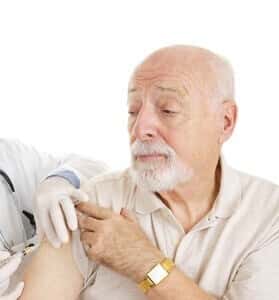
At the peak of this year’s influenza season, public health officials were panicky. The Centers for Disease Control and Prevention (CDC) announced a flu epidemic in mid-January.
The city of Boston and the state of New York both declared public health emergencies. There were so many patients awaiting treatment that one hospital had to put up tents in the parking lot despite bitter cold weather.
Flu was in the news, and at the end of every report Americans were urged to get a flu shot. Senior citizens in particular were targeted with this message. That’s because older people are more susceptible to complications from an influenza infection.
In theory, the influenza vaccine should have been highly effective. That’s because the experts guessed right early last year when they had to predict which flu viruses would be making the rounds this winter. The vaccine for this season was a 92 percent match with the actual influenza viruses infecting people.
How well did the flu shots work in reality? Visitors to our website (www.PeoplesPharmacy.com) alerted us early to the possibility that this year’s vaccination was coming up short. One woman reported:
“I got the flu shot, as I do every year. Now I have the flu. I went from feeling fine to feeling like a bus had mowed me down in about 8 hours. I started medicating myself when my fever hit 102. I have had fever for three days along with a dry, painful cough, general achiness and wooziness and exhaustion.”
Another person had a similar experience:
“My husband and I both got flu shots (at $29 each) last fall when the shots became available. At the end of January, we were both sick with the flu and spent four days in bed with fever, extreme fatigue and violent coughing.
“We know it was the flu because my husband went to the hospital with rapid heart rate and dehydration and he was actually tested for the flu virus. We have gotten flu shots every year for many, many years. We will continue to get flu shots despite this year’s experience because we are told it is more considerate of others to get the flu shots and not spread the disease. I just wish the shots were more effective.”
The CDC has analyzed the flu vaccine for this year and found that it was only about 27 percent effective for people over 65. Of course, these are precisely the folks who most need the protection that a flu shot might offer.
Even worse, the most virulent strain of influenza virus that caused problems this winter, the H3N2, was hardly affected by the vaccine at all. The match was good, but the shot was only 9 percent effective at preventing H3N2 among the elderly.
We clearly need better influenza vaccinations. Even in a more typical year the flu shots are rarely better than 50 or 60 percent effective at preventing viral infections in healthy young adults (The Lancet Infectious Diseases, Jan. 2012).
We also need more honesty from public health officials. That’s the only way Americans can make informed decisions about whether or not to get a flu shot in the future.

